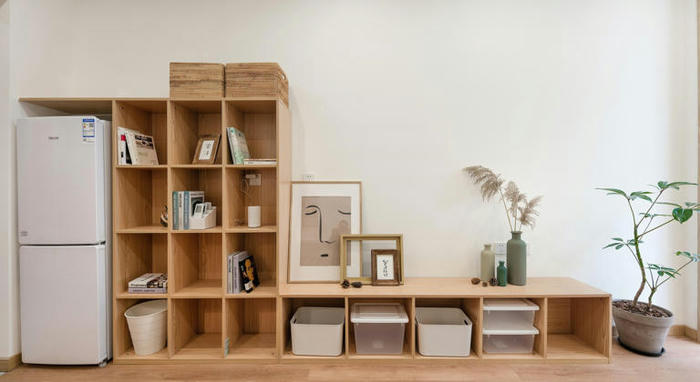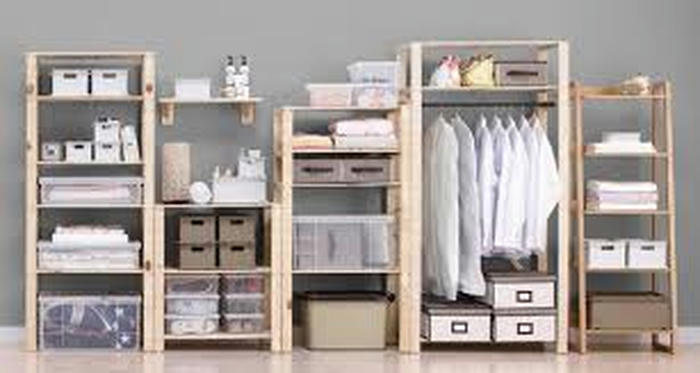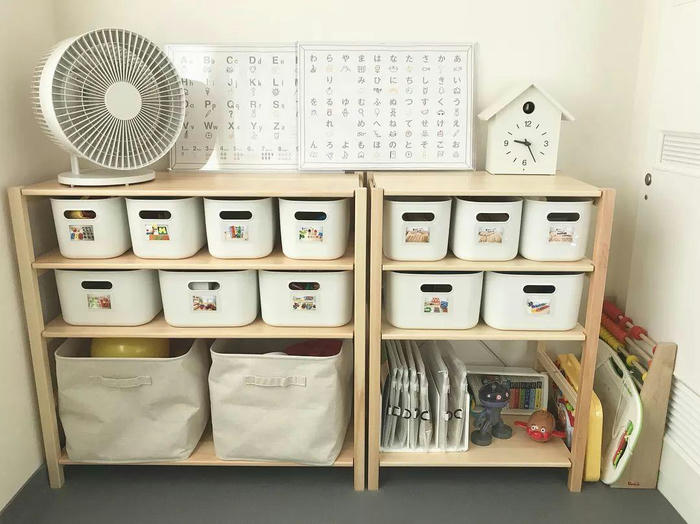Home Organization Secrets: 10 Practical Tips for Creating a Tidy Living Space
A tidy home doesn’t just look better—it feels better, too. Whether you’re living in a small apartment or a spacious house, keeping your living space organized can improve your mental well-being and make your daily life more efficient. But organization isn’t just about tidying up; it’s about creating systems that work for you, making sure everything has its place.
In this article, we will explore 10 practical home organization tips that can help you create a clean, clutter-free environment. These simple yet effective strategies will not only make your home look more inviting but will also help you stay organized long-term. Plus, we’ll include a few real-life examples to illustrate how these tips work in action.
Start with a Clean Slate: Declutter First
The first step to an organized home is decluttering. Before you can effectively organize, you need to get rid of anything you no longer need or use. Start small—perhaps with one room or even just one drawer—and work your way through your entire home.
Case Study: A Closet Overhaul
Sarah, a busy professional, had a closet full of clothes she rarely wore. After deciding to declutter, she pulled everything out of the closet and went through each item, asking herself if she’d worn it in the past year or if it still fit. She ended up donating half of her wardrobe and tossing items that were no longer in good condition. With the excess gone, she was able to organize her closet by category, making it easier to find what she needed. The decluttering process not only freed up space but also made her feel more in control of her belongings.
Tip: Keep a donation box in your closet or garage and regularly toss in items you no longer need. This way, you can declutter bit by bit over time instead of waiting for one massive cleaning session.

Use Vertical Space to Your Advantage
In small homes, vertical space is often underutilized. To maximize storage, make use of walls, tall bookshelves, and hanging racks. Install shelves to hold books, décor, or kitchen supplies, and use hooks or pegs for bags, coats, or accessories.
Case Study: A Small Apartment with Tall Storage
Jake, who lived in a small apartment, needed a better way to store his shoes, hats, and jackets. He added a tall bookshelf in his entryway, where he could store shoes and bags on the lower shelves and hang hats and jackets on the upper shelves. The vertical storage freed up floor space and made his entryway feel more organized.
Tip: Wall-mounted shelves, hooks, or cabinets can store more items without taking up precious floor space. Look for tall, narrow furniture pieces to maximize vertical storage.
Invest in Multifunctional Furniture
Multifunctional furniture is a game-changer when it comes to home organization. From beds with built-in storage to ottomans that open up to reveal hidden compartments, these pieces allow you to make the most of your space without sacrificing comfort or style.
Case Study: A Living Room Transformation
Emma lived in a studio apartment and needed a way to store extra blankets, pillows, and magazines without creating clutter. She purchased a multifunctional ottoman that could be used as a coffee table but also doubled as hidden storage. Now, her living room was both stylish and practical, with a space to store everything out of sight.
Tip: When selecting multifunctional furniture, focus on pieces that blend with your décor but also serve a storage function. Storage beds, sofa beds, and modular shelving units are great options for small homes.
Make Use of Under-Bed Storage

The space under your bed is a goldmine for hidden storage. Instead of letting it collect dust, use bins, baskets, or rolling drawers to store seasonal clothing, shoes, or extra bedding. Under-bed storage can keep your bedroom clutter-free while still providing easy access to your items.
Case Study: A Bedroom Makeover
Lisa lived in a small apartment where her bedroom was cramped with clothing and shoes. She decided to invest in under-bed storage boxes. By storing off-season clothes and extra linens under her bed, she freed up valuable closet space for other essentials. Her room felt more spacious, and everything was neatly organized.
Tip: Invest in low-profile storage bins or rolling drawers that can easily slide under your bed. Clear containers are ideal for quickly seeing what’s inside, but you can also use fabric bins for a more aesthetic look.
Use Clear Storage Containers
When organizing your belongings, clarity is key. Using clear storage bins allows you to see what’s inside, making it easier to find what you need without having to open each container. Labeling containers is also a great way to stay organized, especially for items that are stored away for long periods.
Case Study: A Pantry Organization
Mark had a messy pantry where cans, spices, and dry goods were piled together. He decided to organize it by transferring everything into clear, labeled containers. Not only did it look more aesthetically pleasing, but he could now see exactly what he had at a glance. He also used baskets for small items like snacks and bags of chips, keeping everything organized and easy to access.
Tip: When organizing your pantry, bathroom, or office supplies, choose containers that are stackable and clear. Label each bin with its contents to prevent unnecessary searching.

Create Zones for Different Activities
In homes with multiple rooms or open-concept spaces, creating distinct zones for different activities can help keep things organized. Use furniture or rugs to define areas for dining, working, or relaxing. This method helps ensure that each area serves a specific function and stays clutter-free.
Case Study: A Home Office Solution
Anna worked from home and found it challenging to keep her workspace organized within her living room. She used a large rug to define her work zone and added a bookshelf to keep office supplies off her desk. By creating a designated workspace, she was able to separate work from relaxation, making it easier to stay productive and tidy.
Tip: If you have an open floor plan, use furniture or rugs to create visual boundaries between different zones. This helps maintain organization and prevents clutter from spreading.
Maximize Closet Storage with Hooks and Racks
Closets can quickly become disorganized if not properly managed. Maximize your closet space by adding hooks or racks to the inside of doors or on unused walls. These can be great for storing accessories, bags, or hats, helping you keep your closet tidy and functional.
Case Study: A Closet Revamp
Mike struggled with keeping his closet organized, especially with all his coats and scarves. He added hooks to the inside of his closet door for hanging scarves and bags. This small change helped him keep the floor space in his closet clear and made it easier to access his everyday essentials.
Tip: Use adhesive hooks or install a small pegboard on the inside of closet doors for extra hanging storage. This is especially useful for accessories and smaller items that are prone to getting lost.
Store Seasonal Items Separately
Seasonal items like holiday decorations, winter clothing, or summer gear can quickly pile up and create clutter. Instead of mixing them in with your everyday items, consider storing seasonal items separately in labeled bins. Store them in areas that are out of the way, such as the attic, basement, or under the bed.
Case Study: A Seasonal Storage Solution
Jennifer had a large collection of holiday decorations, but her small apartment couldn’t accommodate them year-round. She decided to store all her seasonal items in labeled bins and placed them on high shelves in her closet. This kept her apartment free from clutter while still giving her easy access when the season arrived.
Tip: When packing away seasonal items, be sure to label the bins clearly. This way, when it’s time to bring them out again, you won’t waste time searching for them.
Keep Daily Essentials Accessible
While it’s important to store seasonal and less frequently used items out of sight, daily essentials should always be easily accessible. Keep items like keys, wallets, and chargers in a designated spot so they don’t get lost in the chaos. A catch-all tray or small bowl by the door is a great way to keep everyday items organized.
Case Study: An Entryway Makeover
Paul was always scrambling to find his keys and wallet before leaving the house. He added a small tray to his entryway table where he could leave his essentials. This simple addition made his mornings run more smoothly and kept the entryway looking organized.
Tip: Designate a spot near your entryway for essentials like keys, mail, and sunglasses. This will help keep your home clutter-free and make it easy to find what you need when you’re heading out.
Maintain Regular Cleaning and Organizing Habits
Organization is an ongoing process, not a one-time task. Make a habit of putting things back in their proper place after use and doing regular check-ups on your home’s organization systems. Daily maintenance will prevent clutter from building up and ensure your home stays organized long-term.
Tip: Set aside 10-15 minutes each day to tidy up your home. This small habit can make a big difference in keeping things organized without feeling overwhelmed.
Conclusion
Organizing your home doesn’t have to be a daunting task. By following these 10 practical tips, you can create a more organized, clutter-free space that’s both functional and stylish. From decluttering and using multifunctional furniture to maximizing vertical space and creating designated zones, there are endless ways to keep your home in tip-top shape. With a little time, effort, and consistency, you’ll have a home that’s not only tidy but also a peaceful retreat to enjoy every day.
